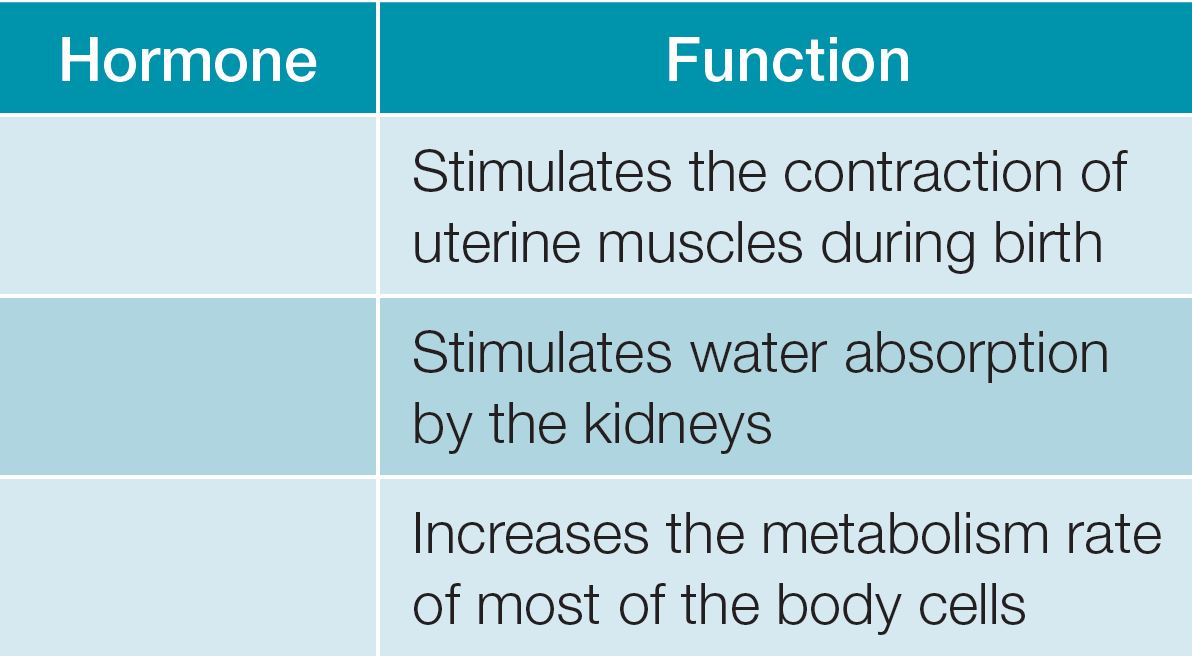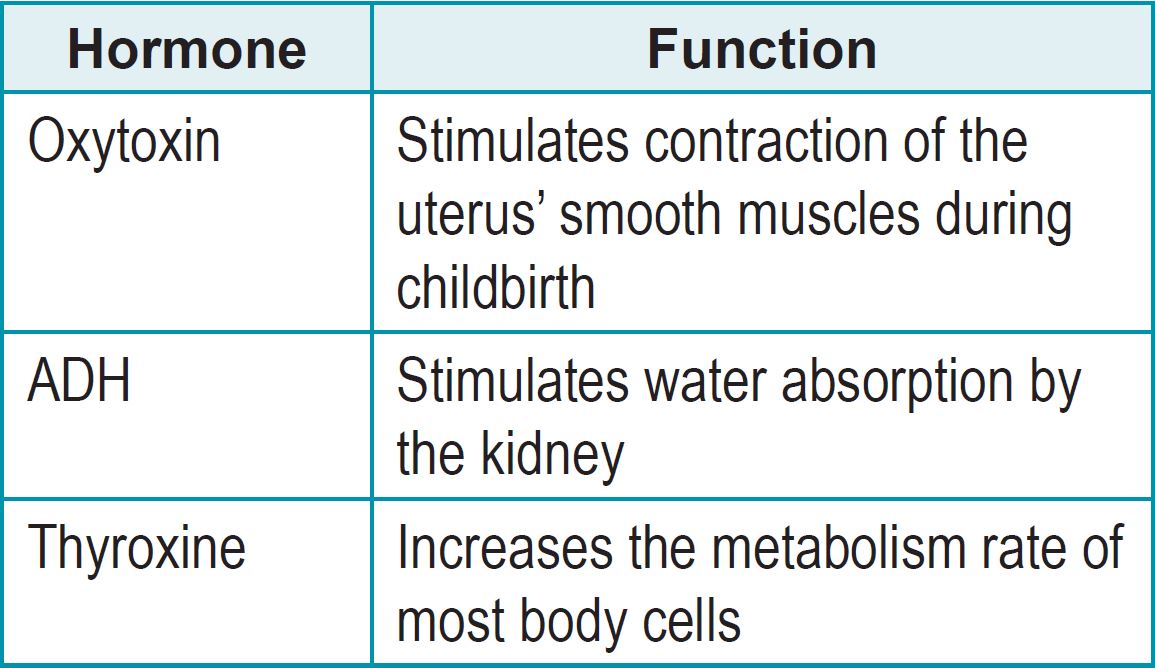Name the hormone that is related to the function given.

Answer:
State three characteristics of hormones.
Answer:
• Secreted by a specialised gland known as the endocrine gland
• Required in a small quantity only
• Effect/influence period is long
Compare between the nervous system and the endocrine system.
Answer:
• The nervous system transmits information rapidly through nerve impulses; the endocrine system transmits information at a slower pace through hormones.
• An impulse induces response from one organ only but a hormone induces response from several organs.
• The effect of a hormone is usually long-term and permanent until it is removed from the blood.
• A nerve impulse produces a quick and short response.
A pupil finds herself being followed by a van and suspects there is an attempt to kidnap her. In a state of panic, the pupil is able to run fast and far away from the van. Explain the ‘fight or flight’ in this situation.
Answer:
In a threatening or ‘fight or flight’ situation, the hypothalamus transmits nerve impulses directly to the adrenal medulla to secrete adrenaline and noradrenaline. Both hormones quickly act by producing the required response in a ‘fight or flight’ situation. These include increased heartbeat rate, respiratory rate, blood pressure, blood glucose level, and metabolic activities. In a ‘fight or flight’ situation, the heart needs to pump more oxygen and glucose to the brain and skeletal muscles. This is because the brain must be very alert and prepared to move the body, and the skeletal muscles need energy to fight or to run away quickly. This means that in a threatening situation, both the endocrine and nervous systems cooperate to produce an immediate response to face the threatening situation. After the mechanism succeeds in controlling the threatening or ‘fight or flight’ situation, the body condition returns to normal.